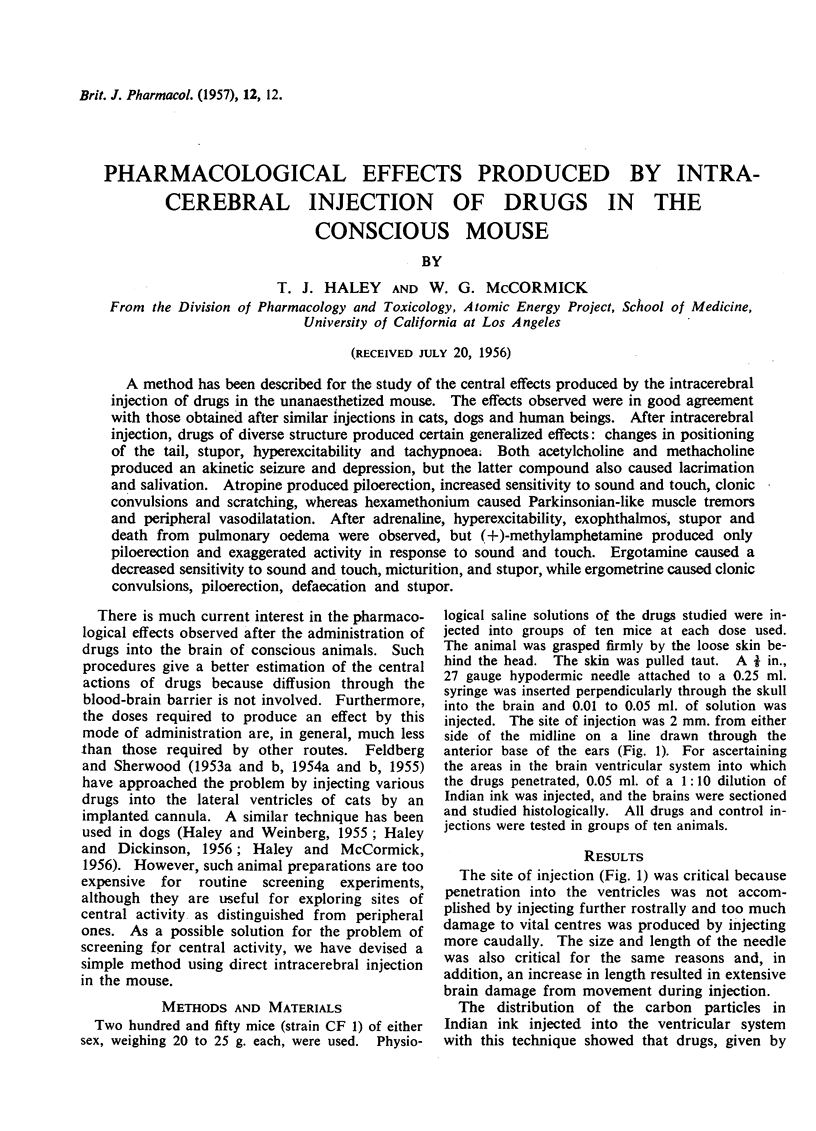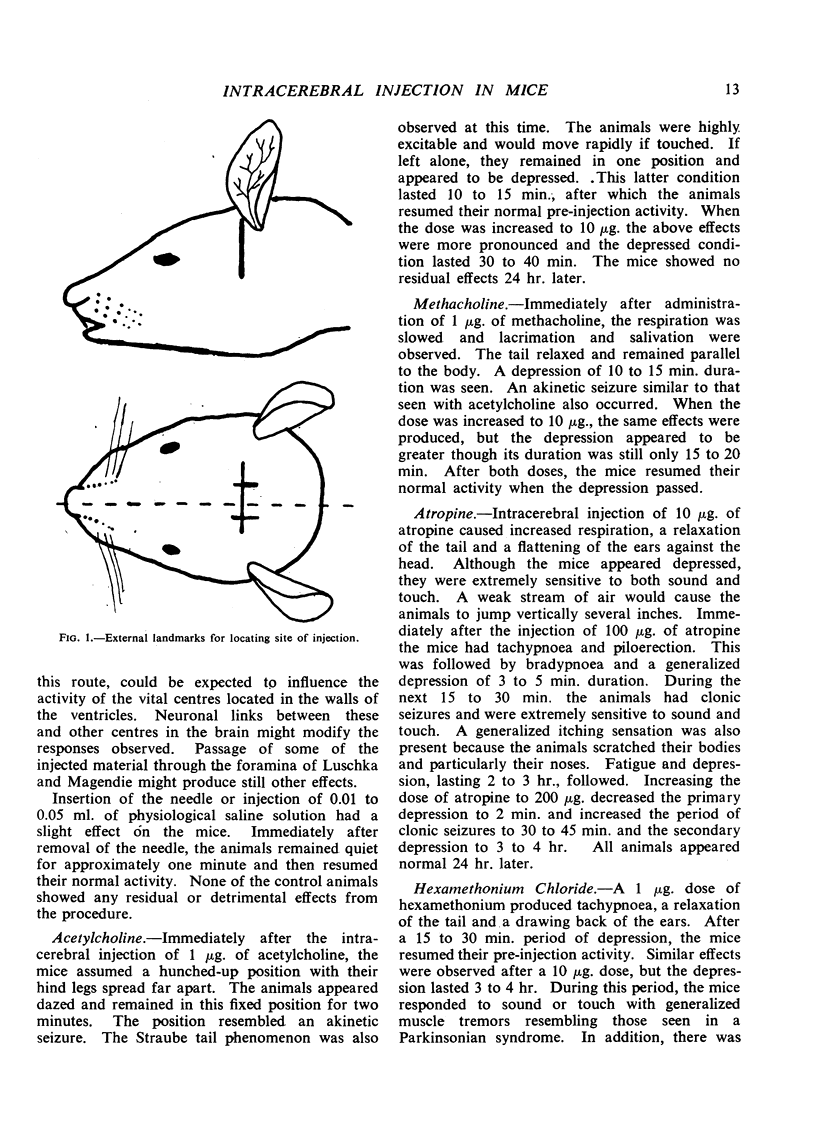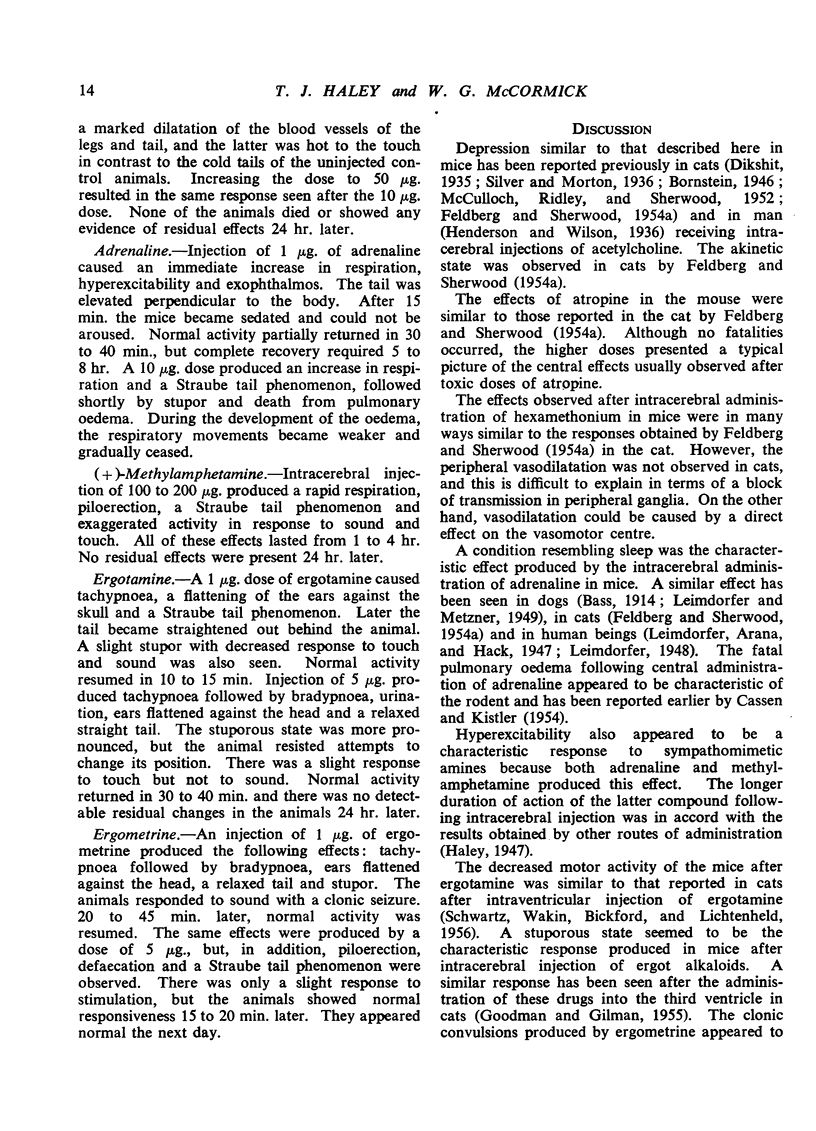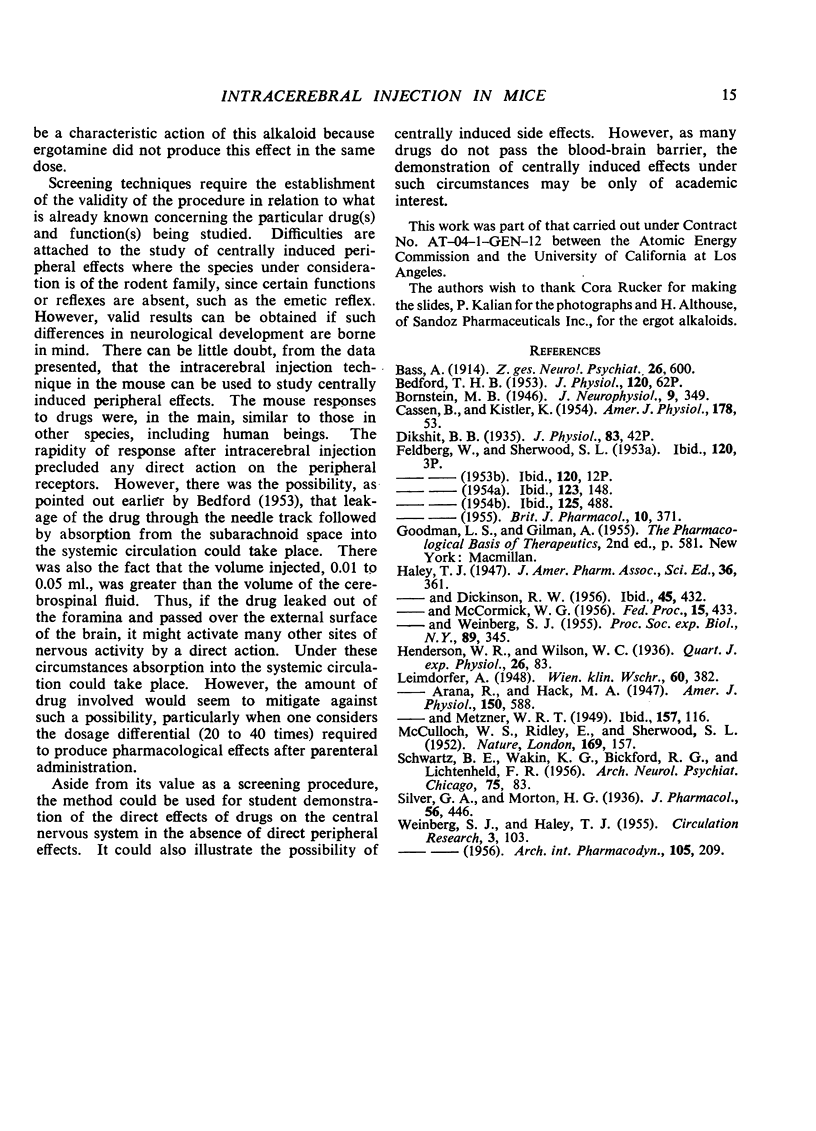Abstract
A method has been described for the study of the central effects produced by the intracerebral injection of drugs in the unanaesthetized mouse. The effects observed were in good agreement with those obtained after similar injections in cats, dogs and human beings. After intracerebral injection, drugs of diverse structure produced certain generalized effects: changes in positioning of the tail, stupor, hyperexcitability and tachypnoea. Both acetylcholine and methacholine produced an akinetic seizure and depression, but the latter compound also caused lacrimation and salivation. Atropine produced piloerection, increased sensitivity to sound and touch, clonic convulsions and scratching, whereas hexamethonium caused Parkinsonian-like muscle tremors and peripheral vasodilatation. After adrenaline, hyperexcitability, exophthalmos, stupor and death from pulmonary oedema were observed, but (+)-methylamphetamine produced only piloerection and exaggerated activity in response to sound and touch. Ergotamine caused a decreased sensitivity to sound and touch, micturition, and stupor, while ergometrine caused clonic convulsions, piloerection, defaecation and stupor.
Full text
PDF



Selected References
These references are in PubMed. This may not be the complete list of references from this article.
- BEDFORD T. H. The absorption of histamine from the subarachnoid space of the dog. J Physiol. 1953 Jun 29;120(4):62P–63P. [PubMed] [Google Scholar]
- CASSEN B., KISTLER K. Effects of pre-administering various drugs on the acute pulmonary edema produced by blast injury and by the intravenous injection of epinephrine. Am J Physiol. 1954 Jul;178(1):53–57. doi: 10.1152/ajplegacy.1954.178.1.53. [DOI] [PubMed] [Google Scholar]
- FELDBERG W., SHERWOOD S. L. A permanent cannula for intraventricular injections in cats. J Physiol. 1953 Apr 28;120(1-2):3P–5P. [PubMed] [Google Scholar]
- HALEY T. J., WEINBERG S. J. Comparison of strophanthin-K and tryptamine-strophanthidin after intraventricular injection in unanesthetized dogs. Proc Soc Exp Biol Med. 1955 Jul;89(3):345–349. doi: 10.3181/00379727-89-21806. [DOI] [PubMed] [Google Scholar]
- SCHWARZ B. E., WAKIM K. G., BICKFORD R. G., LICHTENHELD F. R. Behavioral and electroencephalographic effects of hallucinogenic drugs; changes in cats on intraventricular injection. AMA Arch Neurol Psychiatry. 1956 Jan;75(1):83–90. doi: 10.1001/archneurpsyc.1956.02330190099012. [DOI] [PubMed] [Google Scholar]
- SHERWOOD S. L., RIDLEY E., McCULLOCH W. S. Effects of intraventricular acetylcholine, cholinesterase, and related compounds in normal and catatonic cats. Nature. 1952 Jan 26;169(4291):157–157. doi: 10.1038/169157a0. [DOI] [PubMed] [Google Scholar]
- WEINBERG S. J., HALEY T. J. Centrally mediated effects of cardiac drugs: strophanthin-K, quinidine and procaine amide. Circ Res. 1955 Jan;3(1):103–109. doi: 10.1161/01.res.3.1.103. [DOI] [PubMed] [Google Scholar]


